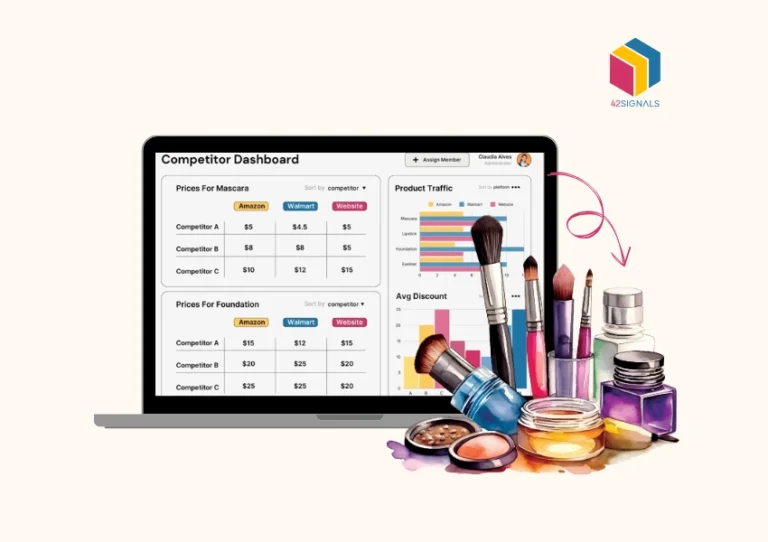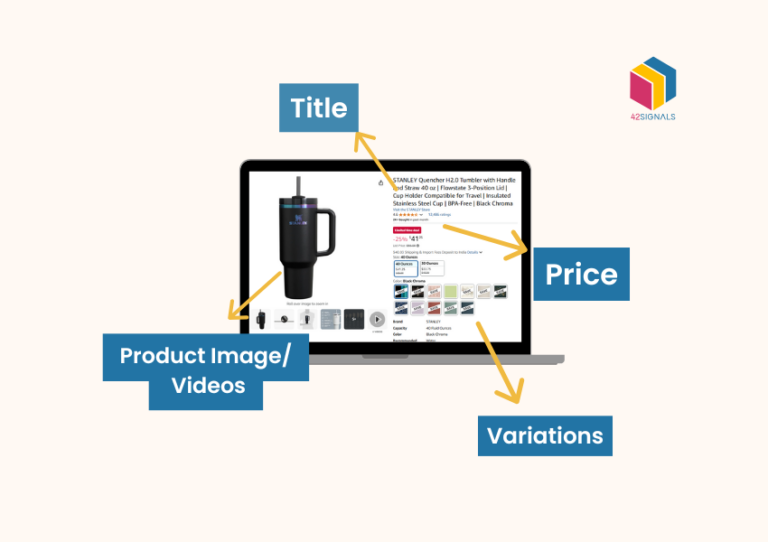Securing a top spot in Amazon’s search results is crucial for driving sales and growing your brand. With millions of products available, standing out requires a strategic approach to Amazon SEO keyword research. By leveraging the right Amazon SEO keyword tools and understanding how to analyze competitor strategies, you can optimize your product listings and improve your rankings
This guide will walk you through the process of conducting effective keyword research, using advanced techniques to position your brand at the top of search results
What is Amazon Keyword Research?

Amazon keyword research is the process of identifying the search terms that potential customers use to find products on Amazon.
These keywords are essential for optimizing product listings, improving search rankings, and driving traffic to your listings. Unlike traditional SEO, Amazon’s A9 algorithm prioritizes relevance and conversion rates, making keyword research even more critical for success.
The goal of Amazon SEO keyword research is to uncover high-volume, low-competition keywords that align with your product offerings. By incorporating these keywords into your product titles, descriptions, and backend search terms, you can increase your chances of appearing in relevant search results and attracting more customers.
Why is Amazon Keyword Research Important?
Improved Visibility: Ranking for the right keywords ensures your products appear in front of shoppers actively searching for them.
Higher Conversion Rates: Targeting relevant keywords helps attract buyers who are more likely to purchase your product.
Competitive Edge: Understanding what keywords your competitors are targeting allows you to identify gaps and opportunities in your strategy.
Cost-Effective Advertising: Effective keyword research can reduce wasted ad spend by focusing on high-performing keywords.
Steps to Conduct Amazon Keyword Research

Image Source: Ahrefs
1. Identify Your Competitors
Start by identifying your top competitors on Amazon. These are sellers who rank highly for products similar to yours. Use Amazon’s search bar to find competitors by entering relevant keywords and analyzing the top results. Tools like 42Signals or AMZScout can also help you identify competitors and their best-performing products.
2. Use Amazon SEO Keyword Tools
Leverage specialized Amazon SEO keyword tools like 42Signals to uncover valuable keywords. Some of the best tools for Amazon SEO keyword research include:

- 42Signals: Provides keyword ranking features for Amazon keyword research with respect to competitors and also keyword suggestion features.
- Helium 10: Offers a suite of tools, including Cerebro for reverse-engineering competitor keywords and Magnet for finding high-volume keywords.
- Jungle Scout: Provides keyword tracking and opportunity finder features to identify profitable keywords.
- Sonar: A free tool by Sellics that generates keyword suggestions based on Amazon search data.
- Keyword Tool for Amazon: Generates long-tail keyword suggestions based on Amazon’s autocomplete feature.
3. Analyze Competitor Listings
Examine your competitors’ product listings to identify the keywords they are targeting. Pay attention to:
- Product Titles: Competitors often include high-priority keywords in their titles.
- Bullet Points and Descriptions: Look for recurring keywords and phrases.
- Backend Search Terms: While not visible to customers, backend keywords are critical for Amazon’s algorithm. Tools like 42Signals can help you uncover these hidden keywords.
4. Focus on Long-Tail Keywords
For Amazon keyword research, long-tail keywords are longer, more specific phrases that often have lower competition and higher conversion rates. For example, instead of targeting “blender,” you might target “quiet high-speed blender for smoothies.” These keywords are particularly valuable for niche products.
5. Evaluate Keyword Metrics
When selecting keywords, consider the following metrics:
- Search Volume: Indicates how often a keyword is searched. High-volume keywords can drive significant traffic but may also be more competitive.
- Keyword Difficulty: Measures how hard it is to rank for a keyword. Tools like Ahrefs or Semrush provide a keyword difficulty score to help you prioritize.
- Relevance: Ensure the keywords align with your product and customer intent.
6. Incorporate Keywords into Your Listings
Once you’ve identified your target keywords, strategically incorporate them into your product listings:
- Backend Search Terms: Add additional keywords that didn’t fit naturally into your listing.
- Product Title: Include the most important keywords at the beginning of your title.
- Bullet Points: Use keywords naturally while highlighting product features and benefits.
- Product Description: Write a compelling description that incorporates secondary keywords.
Advanced Techniques for Amazon Keyword Research
1. Gap Analysis
Identify keywords that your competitors are ranking for but you are not. These gaps represent opportunities to create new content or optimize existing listings. Tools like 42Signals can help you perform gap analysis effectively.
2. Keyword Clustering
Group related keywords into clusters to create thematic content strategies. For example, if you sell fitness equipment, you might create clusters around keywords like “home gym equipment,” “yoga mats,” and “dumbbell sets.” This approach helps you target multiple related keywords within a single listing.
3. Monitor SERP Features
Amazon’s search results often include special features like Sponsored Products, Amazon’s Choice, and Best Seller badges. Analyze how your competitors are leveraging these features and optimize your listings to qualify for them.
4. Track Keyword Performance
Regularly monitor the performance of your target keywords using Amazon SEO keyword tools like 42Signals. Track metrics such as ranking position, click-through rate (CTR), and conversion rate to assess the effectiveness of your strategy.
Common Mistakes to Avoid in Amazon Keyword Research
- Overloading Keywords: Stuffing your listings with too many keywords can harm readability and deter customers.
- Ignoring Search Intent: Ensure your keywords align with what customers are actually searching for.
- Neglecting Long-Tail Keywords: Focusing only on short, high-volume keywords can cause you to miss valuable opportunities.
- Failing to Update Keywords: Amazon’s search trends change frequently, so regularly update your keyword strategy.
- Overlooking Competitor Analysis: Ignoring what your competitors are doing can leave you at a disadvantage.
Incorporating Competitor Keywords into Your Strategy
Analyze competitor keyword strategies and identify areas where you can outperform them.
Use Amazon SEO keyword tools like SEMrush or Ahrefs to extract competitor keyword data and prioritize keywords that offer a balance of search volume and ranking difficulty. Optimize your listings with these keywords and monitor their performance to refine your strategy over time.
Tracking the Impact of Competitor Keywords
To measure the effectiveness of your Amazon keyword research strategy, track key metrics such as:
- Organic Traffic: The volume of traffic driven by your target keywords.
- Keyword Rankings: Your position in Amazon search results for specific keywords.
- Conversion Rates: The percentage of visitors who make a purchase after clicking on your listing.
- CTR (Click-Through Rate): How often users click on your listing when it appears in search results.
Conclusion
Conducting thorough Amazon keyword research is a cornerstone of any successful e-commerce strategy. By using the right Amazon SEO keyword tools, understanding what keywords your competitors are targeting, and identifying gaps in your own strategy, you can position your brand at the top of Amazon search results.
Remember, the e-commerce landscape is dynamic, so continuous monitoring and optimization are key to maintaining your competitive edge one to refine your own strategy.
Discover how 42Signals can elevate your SEO strategy. Schedule a Demo to get started with advanced competitor keyword analysis now.
Frequently Asked Questions on Amazon Keyword Research
How to do Amazon keyword research?
Amazon keyword research involves identifying the search terms that potential buyers use to find products. Here’s how to do it effectively:
- Start with Amazon’s search bar
- Type a seed keyword and note the autocomplete suggestions—they reflect real user searches.
- Analyze competitor listings
- Look at top-performing products in your niche and study their titles, bullet points, and backend keywords (via tools).
- Use keyword research tools
- Tools like 42Signals help find high-volume, low-competition keywords.
- Check product reviews and Q&A sections
- These are gold mines for finding real phrases customers use.
- Track performance over time
- Once implemented, monitor which keywords drive visibility and conversions using Amazon’s Brand Analytics or third-party tools.
What is the best keyword research tool on Amazon?
The best Amazon keyword research tool depends on your goals, but here are top choices:
- Helium 10 (Magnet & Cerebro) – Best for deep keyword mining, reverse ASIN lookup, and competitor tracking.
- 42Signals – Best to understand keyword gaps compared to competitors
- Jungle Scout – Great for product discovery and keyword volume insights.
- SellerApp – Offers keyword research and PPC optimization in one.
- AMZScout – Useful for beginners needing keyword and niche validation.
- DataDive – Advanced keyword and listing optimization platform used by 7-figure sellers.
What are the 3 types of keyword tests in Amazon?
In Amazon SEO and advertising, keyword testing typically falls into three categories:
- Broad Match Test
- Keywords are matched to a wide range of search queries, including synonyms and variations. Useful for discovering new terms.
- Phrase Match Test
- Keywords are matched to search queries that include the exact phrase in order. More targeted than broad.
- Exact Match Test
- Keywords must match the user’s search exactly. Best for measuring performance and ROI on specific terms.







